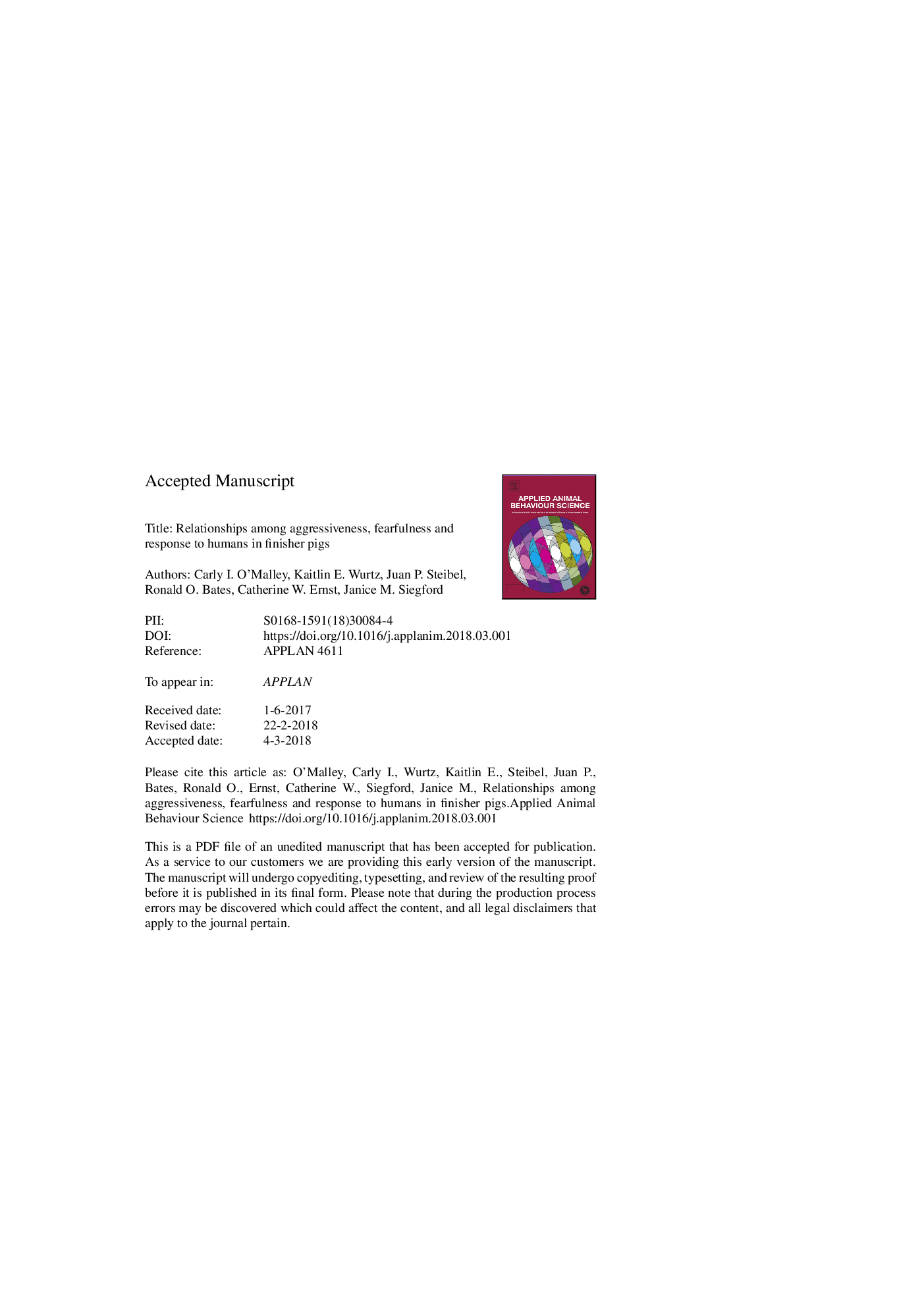| Article ID | Journal | Published Year | Pages | File Type |
|---|---|---|---|---|
| 8882737 | Applied Animal Behaviour Science | 2018 | 35 Pages |
Abstract
Mixing unfamiliar pigs is common in modern production, resulting in intense aggression potentially leading to injury and stress. One solution is breeding against aggressiveness. However, in order to anticipate the consequences of such selection, we need to understand how individual aggressiveness is related to other behavior traits. Tests were used to assess three traits of importance to pig producers: interaction with humans, response to handling, and fearfulness. Test responses (human approach (HAT), handling, and novel object (NOT)) were compared with skin lesions for 257 grow-finish pigs, mixed at 10â¯wk of age. Skin lesions, a reliable proxy for aggressiveness, were counted pre-mixing, 24â¯h post-mixing, and 3â¯wk post-mixing. Lesions were recorded by body location (front, middle, rear). HAT was conducted at 14â¯wk of age in home pens by all-occurrence scans every 30â¯s for 9â¯min. Frequency and intensity (low/moderate or extreme force) of oronasal contact with observer was recorded. Activity and reactivity while entering, in, and leaving a weigh crate were recorded in the handling test (14 and 17â¯wk of age). NOT was conducted at 17â¯wk of age. Pigs were moved to an arena, given a 1â¯min acclimation period, then 5â¯min exposure to a novel object (basketball). Pigs were scored for latency to approach within 1â¯m, 0.5â¯m, and to touch the ball, and on number of times crossing the 1â¯m and 0.5â¯m lines, and touching the ball. Generalized linear mixed models compared behavior test variables and lesions. Test responses were compared using a Mantel test. Pigs with more 24â¯h post-mix front lesions took longer to cross the 1â¯m line (Pâ¯=â¯0.049). Pigs with more 24â¯h post-mix rear lesions interacted intensely with observer (Pâ¯=â¯0.026). Pigs with more 3â¯wk post-mix front lesions were less active in the weigh crate (Pâ¯=â¯0.021) and took longer to touch the ball (Pâ¯=â¯0.033). Pigs with more 3â¯wk post-mix middle lesions were faster to the 0.5â¯m line (Pâ¯=â¯0.005), took longer to touch (Pâ¯=â¯0.006), but touched it more (Pâ¯=â¯0.049). There were no significant relationships between behavior tests, suggesting no consistency in responses across contexts. In conclusion, responses in HAT and NOT were related to 24â¯h post-mix lesions, while responses in NOT and handling test were related to 3â¯wk post-mix lesions suggesting that selecting for less aggressive pigs could have unintended consequences for other important behavior traits and that these relationships should be explored further.
Related Topics
Life Sciences
Agricultural and Biological Sciences
Animal Science and Zoology
Authors
Carly I. O'Malley, Kaitlin E. Wurtz, Juan P. Steibel, Ronald O. Bates, Catherine W. Ernst, Janice M. Siegford,
